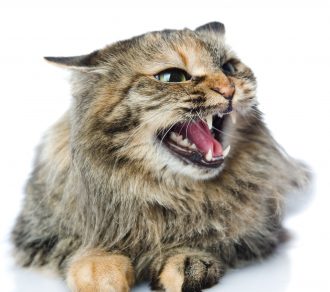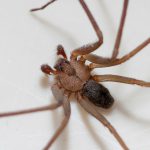The Bite: Spiders, Vampires, and the Feline
Human, cat, and spider bites have some unique characteristics and important treatment considerations. Wound care physicians are presented every day with a variety of common wounds of the pressure, diabetic, and vascular etiology, but we do get our share of rare and less common wounds too.
Penetrating wounds are somewhat common, and of these, bite wounds often result in conditions that require extended care past their acute presentation.
Vampires:
Human teeth (okay, not really vampires) can cause wounds through the infliction of occlusive bites, or through a closed-fist injury where the hand is driven into teeth. Humans are the cause of around 3% of bite wounds each year. The human mouth contains a plethora of bacteria consisting of aerobic and anaerobic species. A human bite wound can result in a polymicrobial infection and commonly consists of Staph, Strep, Prevotella, and Haemophilus. It is typical to isolate four or more species in wound cultures. Eikenella corrodensis found in a majority of these wounds and is the typical answer to a board exam question. A bite from a human can also transmit HIV and Hepatitis viruses and expose one to C. tetani. Local wound care to clean and irrigate the site of injury, debridement of necrotic tissue, and drainage of any pus is required. Antibiotic prophylaxis for immunocompromised and joint space penetration is recommended, as treatment for infected wounds.
Antibiotic selection of amoxicillin/clavulanic acidor a quinolone plus metronidazole is the preferred treatment recommendation. It is important to avoid first-generation cephalosporins (cephalexin), macrolides, aminoglycosides, and clindamycin as Eikenellais resistant to these. The Infectious Disease Society of America (IDSA) 2014 Guidelines on Skin and Soft Tissue Infections is an excellent resource on proper antibiotic selection.
Felines:
Wounds from the feline species, specifically the domestic house cat, are quite common,and in the United States,cat bites result in 15% of all bite wounds or around 400,000 cases annually.

Wounds from cats are potentially serious because of the risk for deep puncture into joint capsule or bone itself and also for injury inflicted by their four sets of sharp claws.
Similar to the human mouth, cat wounds are commonly polymicrobial, and over 50% of bites and scratches result in an infection. Pasteurella multocidais a gram-negative anaerobe found in the respiratory tract of cats and other animals. It is the causative organism in many cat bites, scratches and can even cause infection in some from simply being licked by a cat. Treatment for P. multocida requires proper antibiotic coverage, typically with amoxicillin/clavulanic acid or alternatively doxycycline.
Spiders: In the US, there are numerous spiders that may bite humans, but most literature talks about just two that have the potential for significant morbidity. The brown recluse spider Loxosceles reclusaand the black widow spider Latrodectussp. These two types of spiders are not just two individual species but rather consist of two genera and multiple different species and are found throughout the country. The commonly known black widow, for instance, has a western, north, and brown variety, while the recluse actually consists of 139 recognized species world wide with 13 in the US. Not sure if you have found a brown recluse spider, then tweet a picture to @RecluseorNot.
Only one of these two spiders cause significant wounds. The brown recluse is found throughout the US, and the venom contains a variety of compounds included a neurotoxin. The most significant component is Sphingomyelin phosphodiesterase D,and it is this compound thought to cause endothelial damage, hemolysis, platelet formation and thrombosis of microvasculature, and produces local anesthesia through interruption of nerve conduction. The only other significant source of this compound is some hemolytic bacterial infections. Sphingomyelin phosphodiesterase Dis temperature-sensitive, and cold packs early after a bite may reduce its destructive tissue effects. Localized findings of envenomation are particularly significant in areas of high adipose tissue due to the sensitivity of these cells to Sphingomyelin phosphodiesterase D. The bite of a brown recluse occurs when the spider is trapped against the skin,and this can occur in bed when one turns over onto the spider, or when putting on a shoe containing a spider. Initial pain at the site of bite, a single blister, a central ulcer, and a morbilliform rash are common early findings. Both systemic findings, known as Loxoceslism, and cutaneous findings presenting as a necrotic wound (necrotic arachnidism), can occur. Systemic symptoms include high fever, myalgia, chills, nausea, and vomiting and are thought to be caused by the neurotoxin.

Later in the course, necrosis of the skin and surrounding tissue and possible secondary bacterial infection can occur. The exact mechanism by which necrosis occurs is not fully understood but is likely due to microvascular ischemia and a neutrophil mediated response. Treatment often requires repeated surgical debridement as the necrotic zone can continue to expand over many weeks. Split-thickness skin grafting may be required to achieve closure but should be delayed for up to 3 months to allow for neovascularization to occur first. Hyperbaric oxygen therapy, dapsone, and 0.1mg/h nitroglycerin patch within 48 hours have all been used as therapy but have little or no evidence to support their use. One case series provides evidence that oral antihistamines given every eight hours can effectively resolve necrosis without the need for surgical intervention. Wounds and rashes suspected as recluse bites may, in fact, be other etiologies entirely. The mnemonic NOT RECLUSE has been published as a tool to help in the differential diagnosis of recluse spider bites:
- Numerous: More than one injury
- Occurrence: The wound did not occur in a place where brown recluses are likely to be found.
- Timing: The wound arose sometime between November and March
- Red Center: The center of the wound is red
- Elevated: The middle of the wound is elevated, not sunken
- Chronic: The wound has persisted for more than three months
- Large: The injury is more than 10 centimeters wide
- Ulcerates Too Early: The injury gets crusty within the first week
- Swollen: The wound swells up if it’s below the neck
- Exudative: The wound is “wet,” oozing pus or clear fluid
Recluse bites require a high index of suspicion, supportive care, and meticulous specialized wound care. When presented with bite wounds acutely or later in their course, it is important to consider the etiology and timing of the injury. With any bite but especially human, cat, and spider bites, the key to wound healing and excellent outcomes is access to specialized care, selection of appropriate interventions and antibiotics, tetanus status and booster, meticulous wound care, and appropriate surgical debridement.
Make a Difference in
Patients' Lives and
Your Own Career
JOIN VOHRA WOUND CAREStay up to date on the latest in wound care.
Join our mailing list today!

Thank You For Successfully Registering!
Stay tuned for the latest news and treatments in wound care tailored for medical professionals like you.
